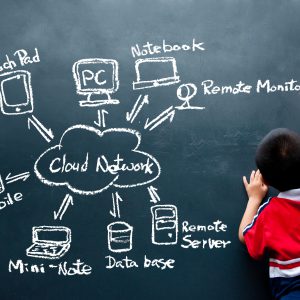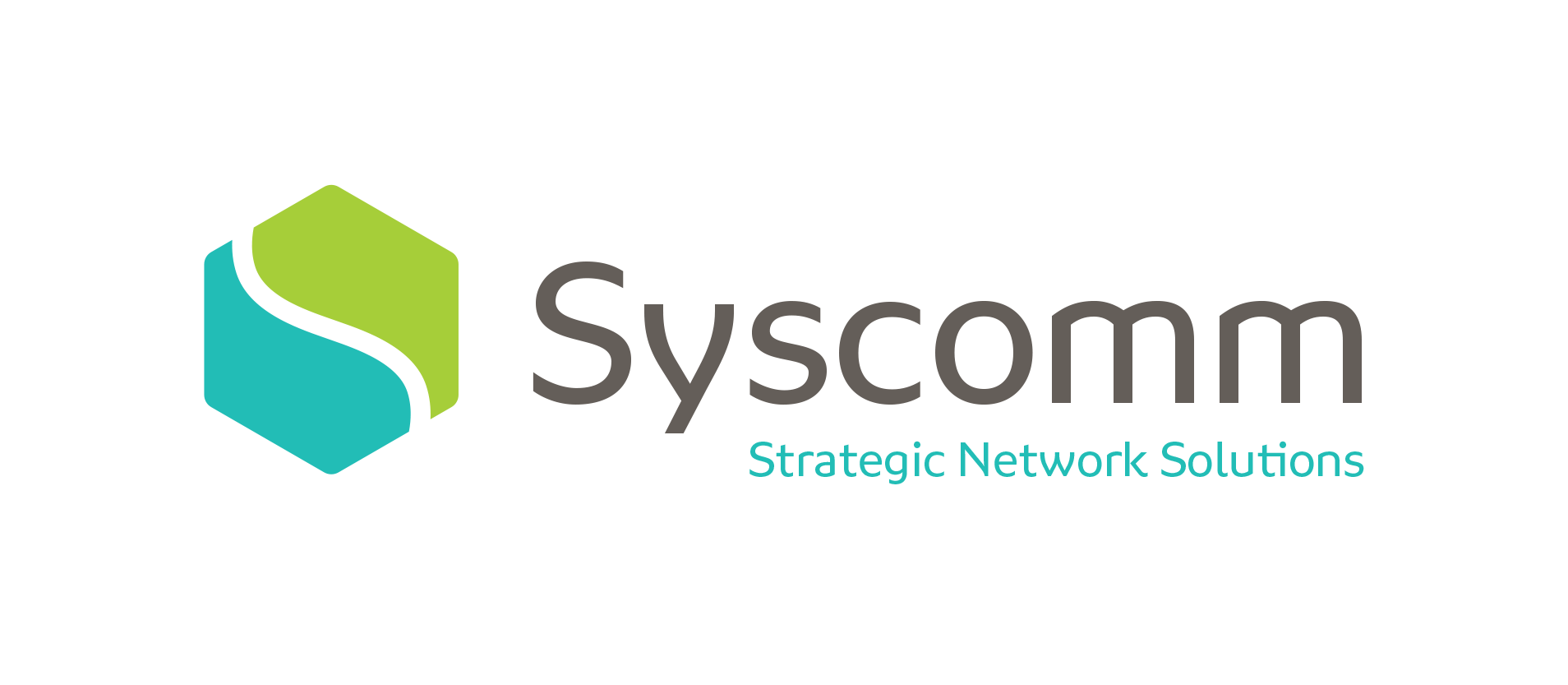How to Harmonise IT Services
& Reduce IT Expenditure
ICT – A Strategic Enabler for your Vision
The operational and financial incentives for MAT’s to consolidate their trust-wide operations are attractive and plotting a course towards Trust-wide harmonisation of IT systems is an important step in the journey.
The dream of schools sharing a consistent and reliable ICT platform, improving collaboration, sharing information and accessing resources from anywhere whilst delivering a leading digital curriculum is appealing, and that consistency also paves the way to a scalable, leading Trust.
Interconnected IT serves to boost the efficiency of virtually any MAT operation in any department and promote ICT to a heightened strategic level across the Trust – both in the classroom and the boardroom – positioning IT as an enabler of innovation, rather than a costly inhibitor.
In truth there isn’t a practical alternative – maintaining disparate islands of IT across the MAT will hinder any drive towards efficiency in any cross-site function. The human productivity costs of discrete back-office and classroom systems can only grow as the number of systems, processes and sites continues to grow. At head office, daily inefficiencies with inconsistent data, or with cross-site communications will derail efforts for operational efficiency until they are addressed.
The earlier a MAT can close the technology gap, the faster (substantial) cost and capability benefits will emerge from an optimal approach to IT. If integration is postponed, IT teams will move in different directions; and juggling those systems and teams will drag against a leadership team’s success.
‘Digital Transformation’ is a complex confluence of vision, design, delivery and people. There’s every chance that the path to harmonisation may not be entirely harmonious. It’s essential to get the fundamentals right first time, and leadership and local curriculum orientated IT teams should recognise that multi-site infrastructure requires a structurally different architecture to IT within an individual Academy.
Strong Foundations are Built to Last
Build you r IT as you would a building – ensure the network foundations are fit for purpose, that the system can adapt and is built to last. ‘Buyer’s remorse’ once you’re up and running with multi-site operations will be costly and disruptive – take the time to build it right first time.
r IT as you would a building – ensure the network foundations are fit for purpose, that the system can adapt and is built to last. ‘Buyer’s remorse’ once you’re up and running with multi-site operations will be costly and disruptive – take the time to build it right first time.
Leadership appreciating the art-of-the-possible from IT will be helpful when outlining the vision clearly to your Network Architects. Validate their designs with technical expertise to ensure it’s up to the job, and is future proofed in line with your vision – the IT crystal ball is murky indeed, but the fundamentals of good network design are not, and good practice will sustain the MAT for a decade or more.
The multi-site network will underpin every part of your trust-wide IT convergence; ensure it is robust and every future classroom or back-office IT application can then be simply categorised as another network service that glides across the smooth surface of a performant, seemingly invisible network that creates no fuss.
Avoid stretching what infrastructure you have without thorough consideration. Much can be reused, but the architectural approach to multi-site networking is different; if stretching will create cracks, or divergence from best practice then the network and every application it supports is adrift. Efforts to patch real-time issues leads to further divergence in technology and teams, adding new complexities over time.
An Enterprise Approach
Effective multi-site convergence is quite achievable and is common practice in business; but a MAT should appreciate the scale of the overall infrastructure. With student numbers exceeding enrolment at many universities plus headcount at the entire DfE, the infrastructure must be delivered to an ‘enterprise’ standard and capable of non-stop 24/7 operation for thousands of users.
The design requires Wide Area Networking and Data Centre expertise to deliver a fault tolerant architecture that can be maintained without enforced out-of-hours work for stretched IT teams.
Seek specialist expertise in these areas and with experience delivering a no-compromise solution within a Multi-Academy ICT budget. Finding enterprise-class advice that is practical and affordable will de-risk your journey towards IT nirvana!
Identify a technology vendor with enterprise pedigree. Their world-class technology will trickle down into their more affordable platforms – so there’s no need to compromise on the technology even with a constrained, but realistic budget. You can be confident with leading vendors that technology and capability continues to flow downhill within their eco-system, and move forwards with the times.
Try and avoid human biases influencing the design, and be mindful of partisan propositions influenced by salesperson preference or limited knowledge. Be wary of cost-first solutions that push Small Business solutions up into your enterprise space. The costs may be tempting, but pushing anything up-hill is exhausting, and a MAT needs to be able to scale without hassle. You’ll want to avoid being the testbed for a vendor’s ambitions in an enterprise segment.
Gartner (gartner.com) are an independent technology analyst whose Magic Quadrant reports allow your decision makers to instantly gauge the calibre of technology within a proposal; if your vendor is missing or a laggard, they may not be your best choice.
Strip out Complexity to Save Time and Money
At a basic level, simply reducing the number of Servers in the MAT’s infrastructure allows ICT staff to spend less time maintaining ‘tin,’ to refocus on user-side enhancements, with users increasingly able to enjoy a consistent IT experience across multiple sites. Finance sees an immediate ROI with lower energy bills, lower Server replacement costs and lower licensing bills.
simply reducing the number of Servers in the MAT’s infrastructure allows ICT staff to spend less time maintaining ‘tin,’ to refocus on user-side enhancements, with users increasingly able to enjoy a consistent IT experience across multiple sites. Finance sees an immediate ROI with lower energy bills, lower Server replacement costs and lower licensing bills.
Access Control is an easily understood example; staff carry a Door Access fob for each Academy they visit; each is programmed individually at each site. 10 sites require 10 cards and 10 tasks on 10 Servers, it’s inefficient and invites human error with granting or revoking access.
Following convergence, one card is programmed once to permit (or revoke) access across the MAT. Should an Academy join the MAT, their doors are added centrally, and access is extended automatically to the required groups. 10 Servers become 2 – with the 2nd acting as a backup and to add new resiliency. This one example removes 80% of the servers required for Access Control, whilst also reducing the scope for human error in the administration of site security.
Similar convergence is readily available across many IT functions including Data Storage, Desktop Deployment, Licensing, MIS Databases, CCTV, Telephony, WiFi, Content Filtering, Offsite Backup and Disaster Recovery.
Across all areas, the MAT can lower their operational IT costs, strip away complexity and deliver Trust-wide consistency through a simplified, harmonised IT platform.
Build the ‘Foundations’: A Multi-Site Wide Area Network (WAN)
The ‘WAN’ is the key component of the design and is of great strategic importance to the Trust. It replaces a traditional Internet connection to provide a new, purpose-built private network that enables cross-site connectivity, paving the way for consolidation.
WAN technology is a step-change for Academies familiar with procuring a (basic) ‘Internet Connection’.
There are three common ways to build a multi-site network:
1) A Mesh of Site-to-Site VPN’s
2) A Software Defined WAN (SD-WAN)
3) A True MPLS WAN
VPN’s and SD-WAN are ‘overlay technologies’, applied on top of public Internet connections to create the effect of a private network between sites; they are useful but oversold and run across the public Internet which makes them unpredictable and not truly private.
MPLS provides a private and predictable WAN solution and should be considered first. MPLS is the technology used by ISP’s to build their own networks and is ideal for multi-site MAT networks. MPLS has a challenging reputation, but the issues stem only from the Service Provider exploiting the model. Choose your Internet Service Provider wisely and MPLS is a great fit and shouldn’t be significantly more costly than a basic Internet service. Do get an agreement on the cost of new sites in advance though, to prevent unscrupulous behaviour by your provider.
A Home for Your Data: On-Premise, Data Centre or Private Cloud Servers
Converging suitable ICT services into two or more focal points in your network facilitates cost-savings without sacrificing resiliency. Trusts can stream ICT applications into their Academies across their MPLS WAN, reducing the dependence on and adding resiliency to on-site Server infrastructure.
If the Trust has a Data Centre facility within the estate – with mission-critical backup power, cooling, network, server and storage resiliency – it can used to push IT applications out across the MAT, though beware of the aggregate Bandwidth requirements, and avoid having too many eggs in too few baskets.
Select an WAN provider who can offer you a ‘Private Cloud’ service, with direct and private access from your MPLS; their Cloud should offer Data Centre levels of resiliency with high speed network access from your Academies. Private Cloud provides a simple, affordable and strategic hosting option for consolidation at low cost and can also provide a quickly recoverable Offsite Backup for Disaster Recovery.
By building Private Cloud directly into your WAN, the security, access and billing complexities of Public Cloud (eg Microsoft or Amazon) are avoided, providing easy flexibility for your IT teams to position IT Services in their most advantageous location anywhere within your MAT, be that locally within an Academy, within your own Data Centres, or within your Private Cloud.
IT’s built – you’re ready to move forward; as one.
With the network foundations and Server repositories built, every IT application your MAT supports can be reduced to a stream of computer data gliding across a robust, efficient and stable underlying architecture.
Your IT team are free to migrate, consolidate, replicate, backup and distribute your classroom and back-office applications with ease, and refocus their IT Service delivery efforts towards strategic support for your MAT’s vision, rather working just to keep the lights on.
Syscomm MAT WAN services are designed to keep you at the forefront of technology. We offer a range of advanced Broadband, Network, Cloud and Telephony solutions allowing our clients the advantage of secure, integrated applications and services. With more than 30 years of experience, Syscomm offers a range of professional Managed IT Services to meet the demands of the education sector. Whether looking to fully outsource or collaboratively co-source alongside existing resources, we deliver a service that enhances performance while considerably reducing the costs of operating, administering and maintaining a next-generation WAN solution. www.syscomm.co.uk/services/education
